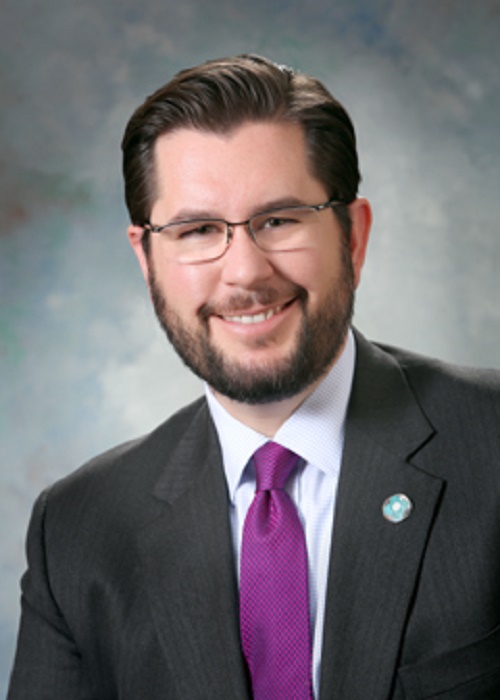By Adam Evarts / NM News Port
The 2020 Census data will be put to use later this year in a special legislative session that will determine a redrawing of legislative districts throughout New Mexico, as required by federal law every 10 years.
The reason there is redistricting is to create districts that are even, or close to even, in population. The reason redistricting becomes controversial is because political parties have been known to draw districts in odd configurations — known as “gerrymandering” — that maximize their political advantage.
In New Mexico, new maps are needed for the state’s three U.S. House of Representatives districts, the 42 New Mexico State Senate districts, the 70 New Mexico State House districts and the 10 Public Education Commission districts.
To begin this process, there needs to be a commission appointed by the New Mexico State Legislature to draw up plans for redistricting and deliver those to the Legislature for a vote.
In a recent survey conducted by UNM Center for Social Policy, voters stated that they want more transparency in the redistricting process. The report states, “89% of respondents say it is important that all redistricting meetings be held in public.” The report also states that “93% of voters want there to be new laws considered to reform districts.”

To guide such an effort, the bipartisan group New Mexico First formed a redistricting taskforce last year consisting of 25 members, headed up by retired New Mexico Supreme Court Justice Edward Chavez.
New Mexico First exists to work on critical issues in the state by using public town halls and forums in order to gain a consensus. All of their work produces suggestions on how good governance should be performed.
Justice Chavez’s task force released a report of their suggestions, which minimize political advantage and prevent gerrymandering by any of the political parties.
“Mandating that they (the legislature) choose from among maps approved by an independent board limits the potential for subversion for political gain,” the report said.
“Yet this method still allows the Legislature to make the final choice of which map will go to the governor for consideration.”
Early Saturday, March 20, on the final day of the New Mexico legislative session, the state House passed Senate Bill 304, which is a bill that largely adopts the Justice Chavez task force recommendations. The bill incorporates elements from two competing bills to organize a seven-member committee to propose new district boundaries. Governor Michelle Lujan Grisham is expected to sign the measure.

SB 304 was proposed by Rep. Rebecca Dow, R-Truth or Consequences, as a compromise between Democratic and Republican legislators that Dow called “a bipartisan effort.”
Most significantly, SB 304 would bar the seven-member redistricting committee from considering party registration data in crafting the new boundaries.
Moreover, SB 304 also calls for the committee to be led by a retired judge or justice, and will hold no less than 12 public meetings for encouraging public input on the redistricting.
Despite these measures, however, the legislature will make the final decision on the district maps and is not limited to the three to five plans it will receive from the independent commission. Democrats hold a majority in both the State Senate and the State House.
The issue of gerrymandering became a hot topic in the aftermath of the election in November 2020, when House Speaker Brian Egolf threatening to redraw districts in favor of Democrats. In that election, a congressional district in southern New Mexico swung from a Democrat to a Republican. Following the election, Egolf made pointed remarks about future elections.

“So this is the last election for New Mexico’s 2nd Congressional District with a map that looks like it looks now,” Egolf said. “So next time it’ll be a different district and we’ll see what that means for Republican chances to hold it.”
Egolf, however, thanked the Republican and Democratic floor leaders for coming to the bipartisan compromise on Saturday.
Kathleen Burke of Fair Districts of New Mexico, a group that pushes for fair redistricting plans, said that she is happy that legislative leaders were using the New Mexico First task force recommendations.
“There does appear to be a distinction between those who want to use the New Mexico Redistricting Task Force recommendations and those who don’t,” Burke said.
Having a transparent process is something Leonard Gorman, executive director of the Navajo Nation Human Rights Commission also wants to see.
“The redistricting activities have to take into consideration local governments and their role on the Navajo Nation,” Gorman said.
Political blogger Joe Monahan expects redistricting to benefit Democrats in most areas.
“Look for the southern congressional seat to be redrawn in favor of Democrats. That means that Representative (Yvette) Herrell will likely be a one-termer,” Monahan said.
It is expected the independent redistricting commission will begin work on redistricting proposals later this summer.
The previous two times that New Mexico’s districts were redrawn, they both ended up in court battles. In 2001, then Governor Gary Johnson and the Democratic controlled State Legislature couldn’t agree on terms of a plan. The same happened in 2011 with then Governor Susanna Martinez and the State Legislature that year. In both cases the subsequent court battles cost taxpayers a combined $9 million for legal fees.
A new report states that the 2020 Census data can be available in August, but in an outdated format that might be difficult to work with since much of the data would need a lot of updating to make it easier to browse through.
Early last month Research & Polling Inc., the company that is compiling the data for the redistricting, told lawmakers that there will be a delay in receiving the Census 2020 information and that it is recommending that the special session to hear and adopt the redistricting maps be held in either late November or December.
You can follow Adam Evarts on Twitter @adam_evarts19 and NM News Port @NMNewsPort
One thought on “Redrawing of NM’s districts looms”
Comments are closed.